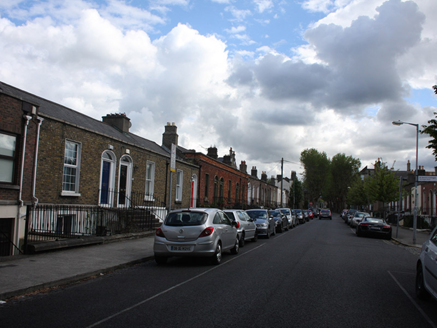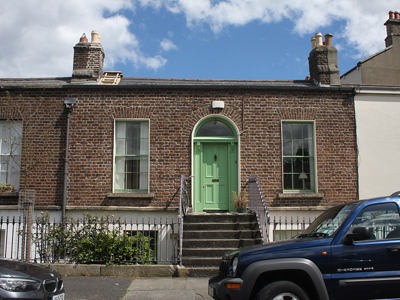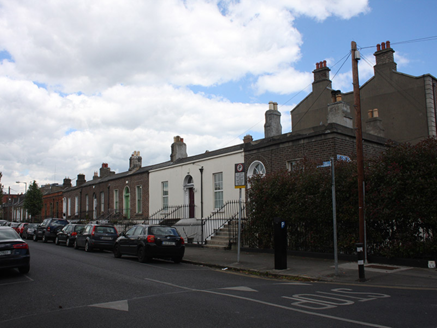Survey Data
Reg No
50110313
Rating
Regional
Categories of Special Interest
Architectural, Artistic
Original Use
House
In Use As
House
Date
1855 - 1875
Coordinates
315511, 232948
Date Recorded
19/05/2017
Date Updated
--/--/--
Description
Terraced three-bay single-storey house over basement, built c. 1865, as one of terrace of five. Pitched slate roof with terracotta ridge tiles, partially hidden behind parapet having granite coping. Brown brick chimneystacks with clay pots, shared cast-iron rainwater goods. Brown brick, laid in Flemish bond, to walls, cut granite plinth course over lined-and-ruled rendered basement wall. Square-headed window openings having raised render reveals and granite sills, with six-over-six pane timber sliding sash windows. Timber panelled shutters visible to interior. Round-headed door opening having moulded render surround. Doorcase comprising panelled pilasters with scrolled consoles supporting carved cornice, plain fanlight. Timber panelled door. Granite steps having clay tiles and cast-iron bootscrape to platform. Cast-iron railings. Square-headed door opening with timber door to basement. Cast-iron gate and matching railings on granite plinth wall, enclosing basement area.
Appraisal
This well-maintained house has retained much of its historic character and form, with notable features including the classically-influenced doorcase and timber sliding sash windows. The execution of the cast-iron elements attests to the quality of mass-produced ironwork in the Victorian period. It forms part of a row of houses with uniform height and fenestration, creating a pleasing rhythm in the streetscape. Synge Street forms part of an early Victorian neighbourhood situated west of Camden Street. It began to be developed when P. Monks built there in the 1850s, and many of the street’s houses were built in the 1860s.





